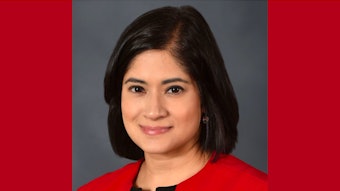Environmental crises call for more CV research
Pollution, rising temperatures can have a big impact on health.

Air pollution and rising heat levels in some regions of the world will impact areas beyond just the environment, including the health of people struggling with cardiovascular disease, according to speakers at the Sunday session “Environmental Crisis Exposome: Reshaping the Landscape of CV Basic Research and Health Care.”
Sanjay Rajagopalan, MD, MBA, FACC, said environmental crises are one of the leading causes of global morbidity and mortality and are collectively responsible for a large increase in noncommunicable diseases. Those account for more than 41 million deaths each year around the world, according to the World Health Organization.
“Cardiovascular disease constitutes a majority of these fatalities,” said Rajagopalan, chief of cardiovascular medicine at Harrington Heart and Vascular Institute in Cleveland. “While traditional risk factors for CVD — such as diabetes, hypertension, smoking and hypercholesterolemia — have long been recognized as independent entities, there is growing evidence that environmental stressors play an increasingly significant role in the genesis of these factors.”
Annette Peters, PhD, chair of epidemiology at Ludwig-Maximilians University in Munich, said cardiologists need to be aware of how these changes can impact patients.
“The environmental crisis and specifically climate change are leading to increased levels of air pollution and heat,” she said.
“Air pollution has both short-term and long-term impacts on cardiovascular disease, while heat triggers cardiovascular disease exacerbation. On a molecular level, we observe, for example, an increase in biological aging both in association with air pollution and heat exposure.”
One cardiovascular area delving into climate-related issues has been ischemic heart disease, Peters said. But research is beginning to expand far beyond that.
“Nowadays, all cardiovascular diseases and cardiovascular function are under investigation,” she said. “Broad-ranged approaches from basic to clinical research and population-based health care research are badly needed.”
Novel areas to investigate include underlying molecular mechanisms and pathomechanisms, integrating cutting-edge approaches in cardiovascular research, Peters said. Research is also needed to address the impact of interventions mitigating the environmental crisis on CV risk. “Finally,” she said, “we need research geared to improve patient treatment during extreme environmental events.”
Rajagopalan noted emerging opportunities for interdisciplinary research between cardiovascular medicine and other fields.
“The emerging areas of research are clearly in bridging disparate fields or transdisciplinary research, including medicine and engineering and, in particular, artificial intelligence that has an incredible capacity to process large amounts of data and synthesize it,” he said.
“Systems science approaches and ways to connect disparate datasets are the needs of the hour.”
In rapidly urbanizing societies at risk for climate hazards, systems science can inform resilience and mitigation measures, Rajagopalan said. “Central to this is the idea that health needs to be an essential consideration in urban engineering to combat risk factors like obesity because of poorly structured environments.”
Session organizer Konstantinos Drosatos, MSc, PHD, FAHA, professor of pharmacology, physiology and neurobiology at the University of Cincinnati College of Medicine, said a particularly important aspect of research is an ongoing effort to create a consensus on standard experimental models to study the effects of environmental crisis on cardiovascular biology.
“This initiative is expected to resonate strongly within the cardiovascular research community,” he said, noting that the American Heart Association will play a pivotal role in creation of this consensus.
“As more research groups begin to incorporate the effects of environmental crisis into their cardiovascular biology programs, the AHA’s involvement will be crucial in setting the standards that will foster standardization and collaboration across the field,” he said.











